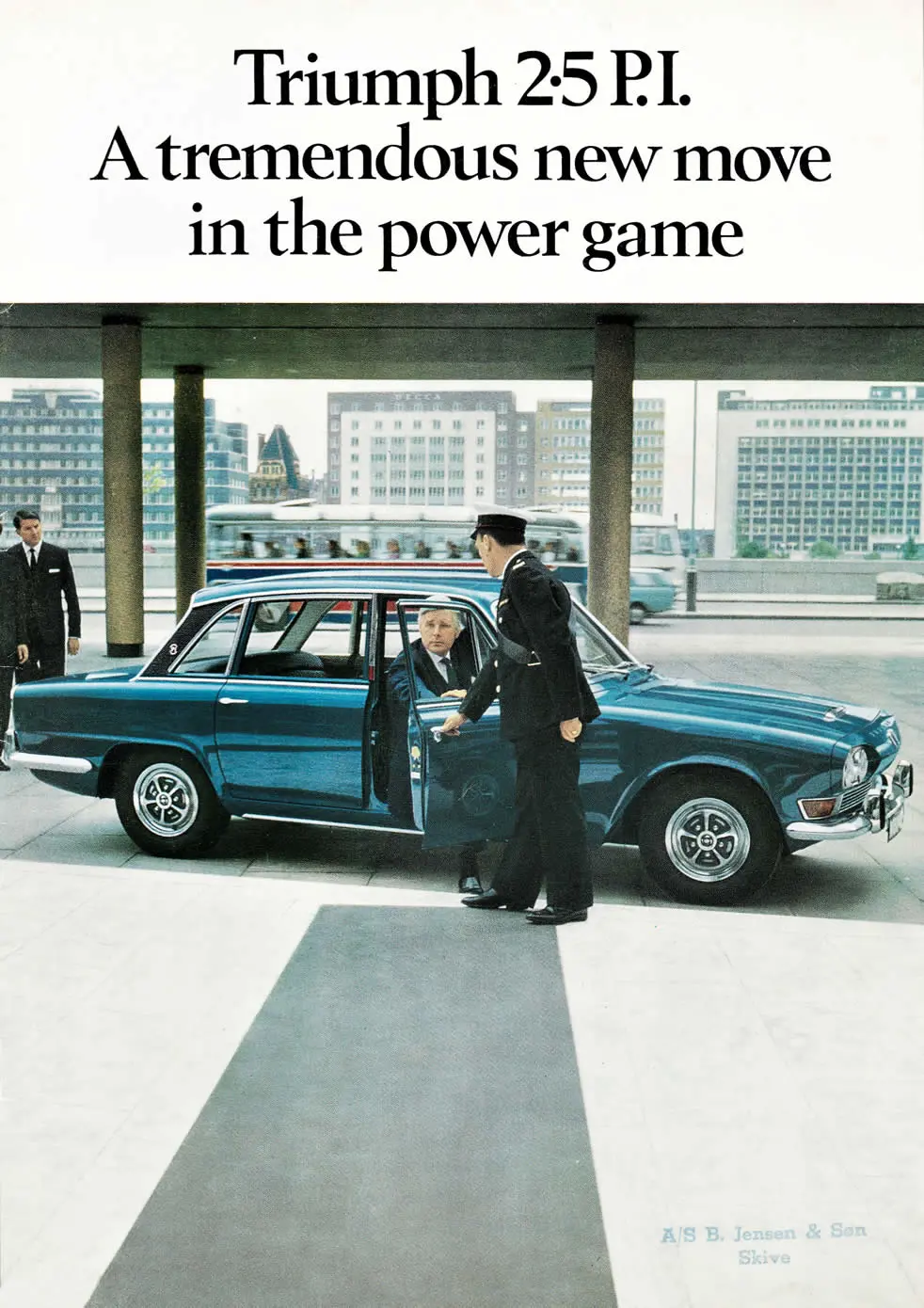The Triumph 2.5 P.I. Mk1 – A Celebration
13 April 2021
The 2000 made its bow at the 1963 London Motor Show and by the mid-1960s Canley was already considering a more powerful version. One option was enhancing the 1,998cc-engine to create the ‘2000TS’. Another was to use the OHC V8 plant from the Stag, then intended for a 1968 launch. Triumph eventually decided that their flagship saloon and the TR would be available in fuel-injected form. The 2000’s six-cylinder unit was expanded to 2,498cc to increase the low-speed torque.

The TR5 debuted in October 1967, followed a year later by the 2.5 P.I. - https://www.youtube.com/watch?v=Q5zfj3tHvB8. The only British fuel-injected saloon could be distinguished from the 2000 via its black C-pillars, badges that read “2500 Injection” and “sports wheels” that were actually hubcaps. The press response was best described as ‘mixed’, with Bill Body of Motor Sport in a somewhat grumpy mood: “I did not much enjoy driving this Triumph, because, apart from the aforesaid notchy gear-change, the steering is heavy”.
Boddy also complained about “that cheap cluster of indicator lamps” while “The interior of the car I find fussy and ‘cheap’”. Car was more positive when evaluating the Triumph opposite its main in-house rival the Rover 2000TC, finding the 2.5 the “…faster and more effortless performer” with its “more exciting handling, conventionally speaking”. They concluded that “a clear-cut decision is impossible”.
And for £1,547 (including the optional overdrive) the Triumph seemed perfect for the Ford driver contemplating trading up from their Cortina 1600E and who regarded the Corsair 2000E as utterly naff. It looked smart – although those wheel trims were slightly over-the-top – and the top speed was around 110 mph. Equally importantly, a 2.5 P.I. was cheaper than an imported BMW 1800Ti but looked just as exclusive – Triumph invited prospective buyers to “Join the Power Elite”.
By 1969 there was also an estate version, which enhanced the 2.5 Pi’s appeal. October of that year saw the 2000 range facelifted as the Mk.2. Unfortunately, as the 1970s progressed, it became clear that the fuel injection was not problem-free. One issue was that too few garages understood how to correctly maintain the system, although Lucas intended it to be straightforward to manufacture and maintain. In essence, it was a modified wiper motor, and many owners found it often overheated, causing the fuel to vaporise. Worse still, repairs could prove expensive.
Leyland South Africa provided the solution with their 1972 “Triumph Chicane” which replaced the injector with carburettors. Shortly afterwards Australian Motor Industries in Victoria introduced the 2500TC and by 1974 the British market followed suit, the 2.5 P.I. finally ceasing production in 1975.
The Mk1 version is now a very unusual sight – especially in estate-car form – and deserves to be celebrated as a genuine pioneer. Plus, as Triumph boasted, it really was “A tremendous new move in the power game”.
Why choose Lancaster Insurance?
Here at Lancaster, we love classic cars as much as you do and we understand what it takes to protect them for future generations.
We have links with some of the top classic car clubs around the country and some of our policies even offer discounts of up to 25% for club members.
Other benefits of classic car insurance through Lancaster can include:
- Historic rally cover
- Static show cover
- Limited mileage discounts
- Choice of repairer
- 24-hour claims helpline
Give your classic the protection it deserves and get a quote for your Triumph today.
